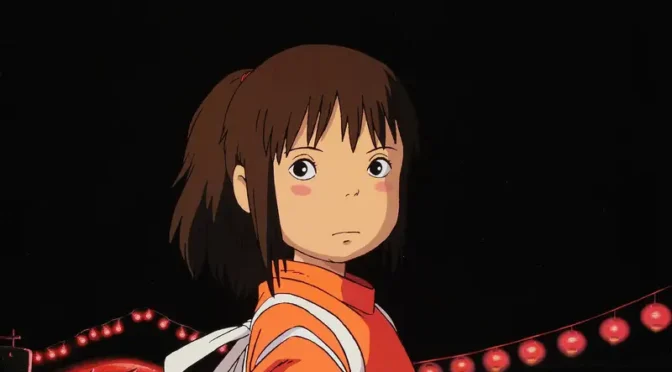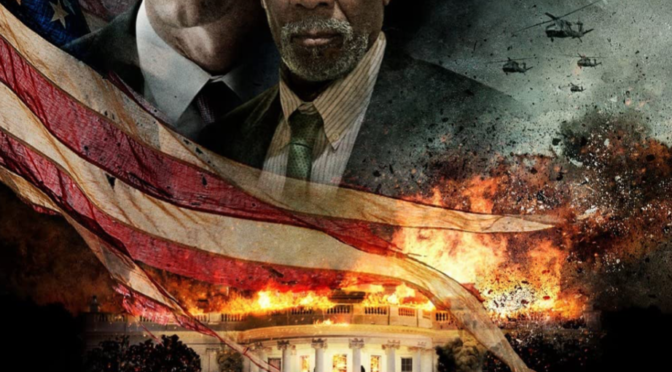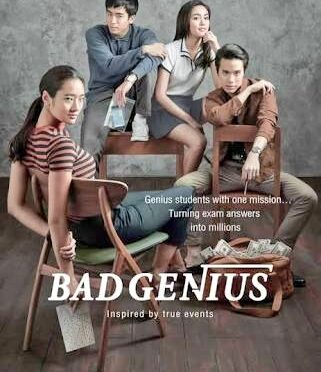Asian cinema is known for its rich diversity, unique storytelling, and captivating visuals. From heart-wrenching dramas to action-packed thrillers, Asian films offer a wide array of genres and styles that appeal to a global audience. This article highlights some of the best Asian films across different countries and genres, providing a comprehensive guide for film enthusiasts looking to explore the vibrant world of Asian cinema.
H1: Iconic Japanese Films
H2: Spirited Away
H3: Storyline and Themes
“Spirited Away,” directed by Hayao Miyazaki, is a masterpiece of animated cinema. The story follows a young girl named Chihiro who stumbles into a magical world while moving to a new neighborhood. As her parents are transformed into pigs by a witch named Yubaba, Chihiro must navigate this fantastical realm to find a way to save them and return to the human world.
The film explores themes of identity, courage, and the clash between modernity and tradition. Chihiro’s journey is not just a physical adventure but a metaphorical passage from childhood to adulthood, filled with challenges that test her resilience and adaptability.
Miyazaki’s use of traditional Japanese folklore elements, such as spirits and deities, enriches the narrative, creating a deep connection with cultural roots. The film’s intricate world-building and detailed animation make it a visually stunning experience that resonates with audiences of all ages.
H3: Visual Style and Animation
“Spirited Away” is renowned for its breathtaking animation and artistic style. Studio Ghibli, the animation studio behind the film, is celebrated for its meticulous hand-drawn animation techniques. The film’s vibrant colors, fluid movements, and attention to detail bring the magical world to life.
Each scene is meticulously crafted, from the bustling bathhouse filled with eccentric spirits to the serene landscapes of the spirit world. The animation not only serves the narrative but also enhances the emotional depth of the characters and their journey.
The film’s visual style combines traditional Japanese aesthetics with modern animation techniques, creating a unique and timeless appeal. Miyazaki’s imaginative vision and dedication to quality make “Spirited Away” a standout in the realm of animated films.
H3: Critical and Commercial Success
“Spirited Away” received widespread acclaim from critics and audiences alike. It won the Academy Award for Best Animated Feature in 2003, making it the first non-English language film to achieve this honor. The film’s success extended beyond Japan, garnering a global fanbase and solidifying Studio Ghibli’s reputation as a leading animation studio.
Commercially, “Spirited Away” became the highest-grossing film in Japanese history at the time of its release. Its universal themes and captivating storytelling resonated with viewers worldwide, contributing to its enduring popularity.
The film’s impact on the animation industry is profound, inspiring countless animators and filmmakers. “Spirited Away” remains a beloved classic, celebrated for its artistic achievements and emotional resonance.
H3: Cultural Impact
“Spirited Away” has had a significant cultural impact, both in Japan and internationally. The film has introduced audiences to Japanese folklore and mythology, fostering a greater appreciation for Japanese culture. Its themes of environmentalism, self-discovery, and resilience continue to resonate with viewers.
The film has also influenced other media, including literature, video games, and other films. Its success has paved the way for greater recognition of animated films as serious artistic expressions.
“Spirited Away” is more than just a film; it is a cultural phenomenon that has left a lasting legacy in the world of cinema.
H2: Seven Samurai
H3: Plot and Characters
“Seven Samurai,” directed by Akira Kurosawa, is a seminal work in the history of cinema. The film is set in 16th-century Japan and follows a group of villagers who hire seven samurai to protect them from marauding bandits. The samurai, led by the wise and experienced Kambei, must train the villagers and prepare for the inevitable attack.
The characters in “Seven Samurai” are richly developed, each with distinct personalities and motivations. The film explores themes of honor, sacrifice, and the complexities of human nature. The dynamic between the samurai and the villagers highlights issues of class, duty, and the struggles of the common people.
Kurosawa’s masterful direction and storytelling create a compelling narrative that keeps viewers engaged from start to finish. The film’s epic scope and emotional depth make it a timeless classic.
H3: Cinematic Techniques
“Seven Samurai” is renowned for its innovative cinematic techniques, many of which have influenced countless films and directors. Kurosawa’s use of multiple cameras to capture action scenes, dynamic composition, and deep focus cinematography set new standards in filmmaking.
The film’s editing is particularly notable, with its use of wipes to transition between scenes, creating a seamless flow of action. The battle scenes are meticulously choreographed, combining realism with dramatic intensity.
Kurosawa’s attention to detail and ability to convey complex emotions through visual storytelling make “Seven Samurai” a landmark in cinematic history. The film’s technical achievements continue to inspire filmmakers around the world.
H3: Legacy and Influence
“Seven Samurai” has left an indelible mark on the film industry, influencing a wide range of genres and directors. The film’s structure and themes have been adapted in numerous remakes and homages, including the famous Western adaptation “The Magnificent Seven.”
Kurosawa’s approach to storytelling and character development has inspired filmmakers such as George Lucas, Steven Spielberg, and Martin Scorsese. The film’s impact on the action and adventure genres is particularly significant, with its blend of drama, action, and rich character arcs setting a benchmark for future films.
“Seven Samurai” remains a touchstone in the study of cinema, celebrated for its artistic and technical innovations. Its legacy continues to endure, captivating new generations of film enthusiasts.
H3: Awards and Recognition
“Seven Samurai” has received numerous awards and accolades since its release in 1954. The film won the Silver Lion at the Venice Film Festival and was nominated for two Academy Awards. Its critical acclaim has solidified its status as one of the greatest films ever made.
The film’s inclusion in various “greatest films” lists, including the Sight & Sound and American Film Institute rankings, attests to its enduring significance. “Seven Samurai” is often studied in film schools and appreciated for its contributions to the art of filmmaking.
Kurosawa’s masterpiece continues to be celebrated for its narrative depth, technical brilliance, and profound impact on the world of cinema.
H2: Battle Royale
H3: Premise and Themes
“Battle Royale,” directed by Kinji Fukasaku, is a controversial and provocative film that explores themes of survival, authority, and the loss of innocence. The film is set in a dystopian future where a class of high school students is forced to participate in a deadly game, where they must fight each other until only one remains alive.
The film delves into the psychological and moral implications of such a brutal scenario, examining how individuals react to extreme circumstances. The characters’ struggle for survival reveals their true nature, highlighting themes of trust, betrayal, and the inherent violence within society.
“Battle Royale” challenges viewers to confront uncomfortable truths about human behavior and societal structures. Its intense and gripping narrative makes it a compelling and thought-provoking film.
H3: Visual Style and Direction
Fukasaku’s direction in “Battle Royale” is marked by its raw and unflinching portrayal of violence and human emotion. The film’s visual style is gritty and realistic, with handheld camera work and rapid editing creating a sense of immediacy and chaos.
The island setting, with its contrasting beauty and brutality, serves as a backdrop for the unfolding drama. The film’s use of natural landscapes juxtaposed with the violent actions of the characters enhances the overall tension and atmosphere.
Fukasaku’s ability to elicit powerful performances from the young cast adds depth to the film’s emotional impact. The characters’ fear, desperation, and moments of humanity are captured with visceral intensity, making “Battle Royale” a harrowing and unforgettable experience.
H3: Cultural Impact
“Battle Royale” has had a significant cultural impact since its release in 2000. The film sparked debates about its violent content and the portrayal of youth, leading to its ban in several countries. Despite the controversy, “Battle Royale” has gained a cult following and is considered a landmark in Japanese cinema.
The film’s influence extends to various media, including literature, video games, and other films. It has inspired works such as “The Hunger Games” series, which shares similar themes and narrative elements.
“Battle Royale” continues to be a reference point in discussions about violence, media representation, and societal critique. Its bold and unapologetic approach to storytelling challenges viewers to reflect on the darker aspects of human nature and societal dynamics.
H3: Awards and Recognition
“Battle Royale” received critical acclaim for its daring narrative and powerful performances. The film won several awards, including the Blue Ribbon Award for Best Film and the Mainichi Film Concours Award for Best Supporting Actor for Takeshi Kitano.
The film’s recognition extends beyond awards, with its lasting influence on popular culture and the film industry. “Battle Royale” is often cited in academic studies and discussions about cinema, particularly in the context of dystopian and survival genres.
The film’s enduring popularity and relevance highlight its significance as a bold and impactful piece of filmmaking.
H2: Your Name
H3: Storyline and Themes
“Your Name,” directed by Makoto Shinkai, is a beautifully crafted animated film that explores themes of love, fate, and the connection between individuals. The story follows two high school students, Taki and Mitsuha, who mysteriously begin to swap bodies, experiencing each other’s lives and forming a deep bond.


